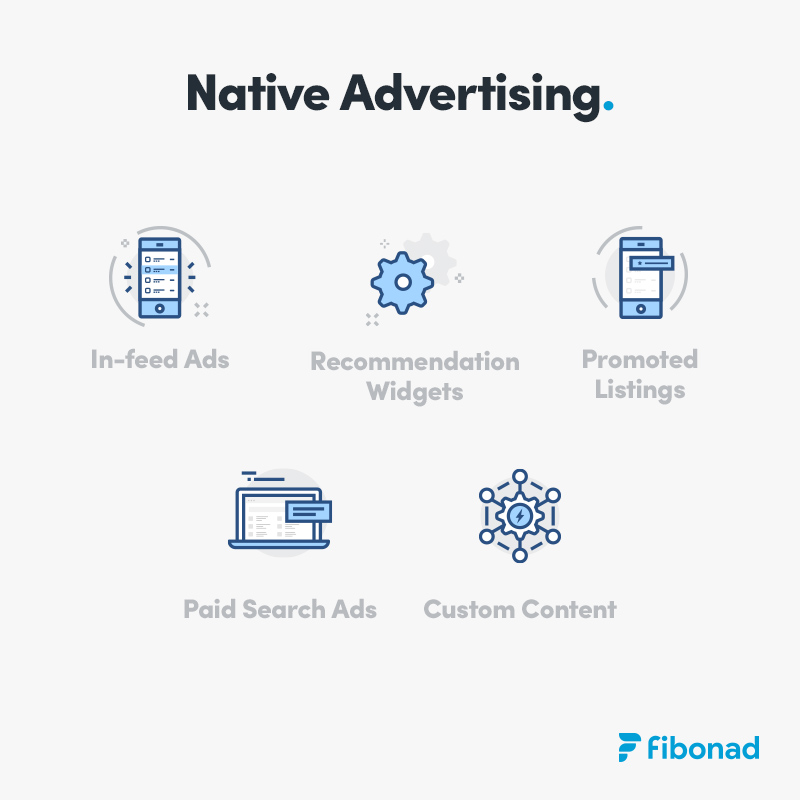Native Advertising is one of the hottest topics at the moment but, do you actually understand how it works? The format offers many options and can be displayed in numerous ways. Below, we explain how native ads can be used to create a campaign suited to your needs.
In-feed Ads
This is probably the most popular format of native advertising. Platforms such as Facebook, Twitter, Yahoo, Snapchat, and Instagram contain native ads. They can take either of the two forms: Sponsored content or in-feed promotions.
Sponsored content takes the form of other content appearing in that particular feed.
In-feed promotions appear in a feed but rather than behaving like content, it directly promotes and links to content on the site in question. The in-feed ad format is widely used by large social networks such as Facebook, Twitter, and LinkedIn to help them present content in a such a way that user experience isn’t negatively effected.
Recommendation Widgets
Recommendation widgets usually feature content that is contextually related to what you’re currently reading, but the content is from other brands and publishers not from the site you’re currently on.
They are usually introduced with phrases such as “You may also like” or “Recommended for you,” to encourage the user to interact without feeling forced.
As advertisers continue to look for new avenues through which to distribute their content, recommendation widgets have quickly become one of the most popular native ad options. With the widgets, sites can achieve their KPI goals and monetize the traffic they get by recommending content to consumers.

Promoted Listings
Rather than pushing content, promoted listings usually feature products or services, but they still meet the rule of native advertising that requires them to fit with the context. Promoted listings are highly targeted and relevant, often based on the user’s recent behavior on the web. For instance, the post could be products from recently visited e-commerce sites or recent searches on Google.
Although they’re similar to in-feed promotions, promoted listings are distinct because they appear on sites tthe whohat don’t have traditional editorial content.
Paid Search Ads
Paid Search Ads are direct-response ads that are promoted alongside search results. They are considered native ads because they appear in a format and layout that matches the organic search results, even though they are indicated as sponsored.
Direct response ads are one of the first native ads formats and also the first to become popular among advertisers. Google Adwords is the biggest player in paid search, but Bing also offers a paid search ad platform.
Custom Content
While they are clearly a form of native advertising, some ads are too custom to be placed in any of the native ads groups mentioned above.
Custom content includes everything not mentioned above but with similar characteristics. With custom content, advertisers and publishers join together to make websites with content that users may find relevant. Sponsored content is a type of custom content, but is considered more native since it has the same look and feel to the content on the site. Sometimes sponsored content is written by the advertiser and posted on the publisher’s site. However, many big publishers employ editorial teams to create this content for advertisers, so it not only looks like the publisher’s content, it sounds like it too.
So there you have it, the skinny on Native Advertising. At Fibonad, we have a specialist team dedicated to creating the top native Ads, with an expertise in creating content.
If you’re interested, get in touch to see how we can help you out.